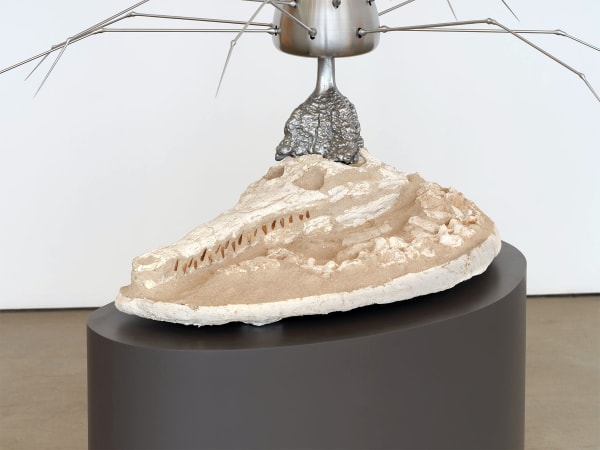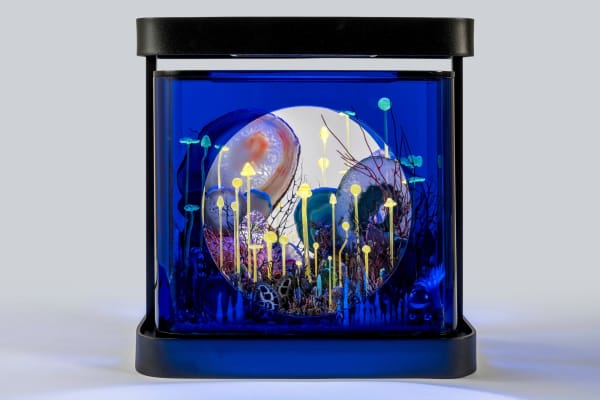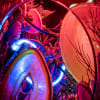Max Hooper Schneider: Falling Angels
Angels of immanence are not the pink-hued and bewinged putti of the Italian Renaissance. They are Breughel’s rebel angels, fallen angels who wear no halos, know no gods, and consider transcendence and the supernatural dangerous inventions. They are terrifying and demonic as well as sublime. They can be summoned but they are fickle and may not come. They promote contact with bodies you would rather avoid and prohibit contacts you desire. They allow you to believe you are an independent thinker but in the manner of autonomic judgments sourced in inherited taxonomies and classificatory regimes, will, according to whim, exercise their dictatorial powers, inciting sensations of pleasure and pain, sadness and joy, without consent. Their appetites are voracious and it is important to be aware that while you may think you are being accompanied on your life-journey by a guardian angel, it is entirely possible that one day they will decide to eat you for dinner.
Falling Angels marks Max Hooper Schneider’s return to his hometown of Los Angeles after numerous lockdowns and a multi-institutional tour abroad. For his solo presentation at François Ghebaly, Max Hooper Schneider presents a collection of “climax communities” in which the pioneers of devastated biomes have succeeded their former occupants — an alternative reality where humans have been evicted from their position of centrality, their planetary heimat being opened to the cacophony of stories told by other species or “things.” “Humans may be gone,” says Hooper Schneider, “but their relics survive and have become the homes of new settlers. The works operate in two zones simultaneously, that of the traumatic and that of the marvelous, and it is the tension between them that is the true signature of the works.” You can see them as landscapes in their terminal state, but they also flourish.
At the core of his practice is an investigation of how humans understand the world, and of the stories they tell themselves about their place in that world — including stories told as art. “In their hegemonic western formulations,” he says, “these stories explain that humans, unique and exceptional in the universe, have the ability to transcend the world they inhabit, thereby mastering it and bending it to their will — and not only the ability, but the right. These stories have functioned to authorize and legitimate human intentions toward the world, including granting them permission to destroy it.”
The concept of the “Trans-Habitat,” which originated early in Hooper Schneider’s practice, dramatizes reality conceived in a dynamic and autopoietic way. In his words, “as an immanent process of ceaseless morphogenic modulation, a relentless onslaught in which bodies, as formed matters, are continuously created, transformed, destroyed, and recreated. Every body exists only through its interactions, communications, and exchanges of matter, energy, and information with other bodies.” Falling Angels continues the earlier thematics and tactics of the Trans-Habitat, but is also a manifestation of a creative evolution of Hooper Schneider’s practice. The exhibition introduces new material forms and technologies and is a more explicit articulation of Hooper Schneider’s ideas that have been present from the beginning but have remained more and less latent—e.g., defamiliarization, sensation, the uncanny, beauty, and the sublime. Falling Angels is the phantasmagoria of material innovations, the auratic product of recent research and experimentation, that shines forth, lighting up the darkened gallery. Trans-Habitats exist at varying scales, from a planet or biome to a cell or molecule. Hooper Schneider deploys a similar scalar diversity, from the miniaturized worlds of the vitrines to the monumental land art of Mongolia and the Mall.
As Nicolas Bourriaud noted in his essay, Max Hooper Schneider: The Molecular Accelerator (Cura no. 39, 2022), Renaissance painters represented angels as messengers or points of contact between the spiritual and the material worlds: Hooper Schneider presents us the messengers operating in the Anthropocene, the mysterious factors in the metamorphosis and re-composition of the visible, the active agents connecting cellular, bacterial, parasitic, hormonal and social life — who also operate the minuscule transitions between life and death, creation and destruction.
Written by Nicholas Bourriaud and Max Hooper Schneider.
Max Hooper Schneider (b. 1982, Los Angeles, CA) received his Master’s degree in Landscape Architecture from Harvard’s Graduate School of Design (2011). In addition, he received undergraduate degrees in urban design and biology from New York University and did further studies in marine biology and entomology at The University of Hawaiʻi at Mānoa and Santa Monica College. Selected solo exhibitions include MO.CO Montpellier Musée Contemporain, Montpellier, France (2022); Hammer Museum, Los Angeles, CA (2019); High Art, Paris, France (2021, 2015), and Jenny’s, Los Angeles (2018, 2014). His work was included in group presentations at the Centre Pompidou-Metz, France (2022); Schinkel Pavillon, Berlin, Germany (2021); Leeum Museum of Art, Seoul, Korea (2021), Liquid Life, Kistefos Museum, Jevnaker, Norway (2021), the Belgrade Biennale, Serbia (2021); Regen Projects, Los Angeles, CA (2021); Marc Selwyn Fine Art, Los Angeles, CA (2021); the 16th Istanbul Biennial, Turkey (2019); Musée d’Art Moderne de Paris, Paris, France (2019); the 13th Baltic Triennial, Lithuania (2018); Ullens Center for Contemporary Arts (UCCA), Beijing, China (2017); High Line, New York, NY (2017) and Gagosian, Los Angeles, CA (2015). Falling Angels is his first solo exhibition with François Ghebaly.
Nicolas Bourriaud (b. 1965) is a curator and writer. He is the founder of Radicants. Bourriaud was the founder and director of Mo.Co Montpellier Contemporain from 2016 to 2021. He was the director of the École Nationale Supérieure des Beaux-Arts de Paris from 2011 to 2015. From 2010 to 2011, he headed the studies department at the Ministry of Culture in France and from 2007 to 2010, he was Gulbenkian Curator for Contemporary Art at Tate Britain in London. He was founder advisor for the Victor Pinchuk Foundation in Kyiv and founded and co-directed the Palais de Tokyo, Paris between 1999 and 2006.
-
 Max Hooper Schneider, Falling Angel, 2023
Max Hooper Schneider, Falling Angel, 2023 -
 Max Hooper Schneider, Fossil Epizoon (dyrosaurus), 2021
Max Hooper Schneider, Fossil Epizoon (dyrosaurus), 2021 -
 Max Hooper Schneider, ROUTE 666, 2023
Max Hooper Schneider, ROUTE 666, 2023 -
 Max Hooper Schneider, BENTHIC SIREN, 2023
Max Hooper Schneider, BENTHIC SIREN, 2023 -
 Max Hooper Schneider, Dendrite Bonsai (Corn), 2023
Max Hooper Schneider, Dendrite Bonsai (Corn), 2023 -
 Max Hooper Schneider, ABYSSAL BELL, 2023
Max Hooper Schneider, ABYSSAL BELL, 2023 -
 Max Hooper Schneider, Dendrite Bonsai (Banana), 2023
Max Hooper Schneider, Dendrite Bonsai (Banana), 2023 -
 Max Hooper Schneider, PARALLAX LAGOON, 2023
Max Hooper Schneider, PARALLAX LAGOON, 2023 -
 Max Hooper Schneider, Dendrite Bonsai (Lemon), 2023
Max Hooper Schneider, Dendrite Bonsai (Lemon), 2023 -
 Max Hooper Schneider, UNDERTOW MOON, 2023
Max Hooper Schneider, UNDERTOW MOON, 2023 -
 Max Hooper Schneider, Dendrite Bonsai (Hands), 2023
Max Hooper Schneider, Dendrite Bonsai (Hands), 2023
-

Review: Max Hooper Schneider at François Ghebaly
Annabel Osberg, Artforum, September 1, 2023 -

What’s Broken Heals Better
Jennifer Remenchik, Hyperallergic, May 29, 2023 This link opens in a new tab. -

Max Hooper Schneider at François Ghebaly
Vanessa Holyoak, CARLA, May 25, 2023 This link opens in a new tab. -

Melted action figures, mushrooms, rotting French fries: Inside Max Hooper Schneider’s ‘feral’ art
Leah Ollman, The Los Angeles Times, May 5, 2023 -

The Back Room of This Artist’s Studio Is Called the Abattoir
Travis Diehl, The New York Times Style Magazine, April 13, 2023 This link opens in a new tab.













